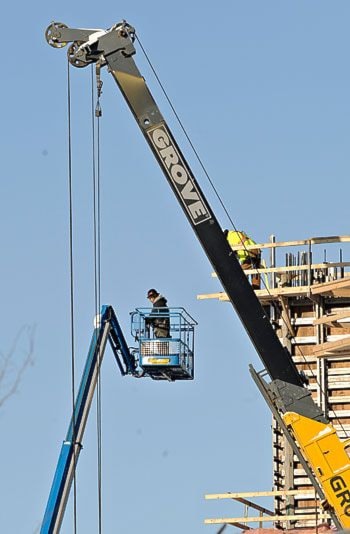With no minimum age requirements and a host of dangerous industries, the Yukon has traditionally been a hazardous place for young, inexperienced workers.
Young people are more likely to get cut, burned and bruised than their older and more experienced coworkers.
And sometimes these injuries can kill.
Last month, 20-year-old Paul Wentzell died while working underground at Yukon Zinc’s Wolverine mine.
Safety advocates are hoping specialized training will help protect workers like Wentzell in the future.
Beginning next year, new training standards will be set out in the Yukon Worker’s Compensation Health and Safety Board’s new code of practice.
The code of practice recognizes young workers are at greater risk of injury than their older, more experienced coworkers.
Because of this, employers need to pay special attention to their orientation and training.
In 2008, there were 141 workers under the age of 25 who were injured on the job.
Of those, 34 were younger than 19 and at least one was less than 15 years old.
About 12 per cent of the Yukon’s workforce is made up of these younger workers and they make up an equal percentage of all accepted-injury claims.
However, because young workers are more likely to be working part-time or seasonally, these numbers may belie the extra dangers faced by young workers in the territory.
The new code explains the minimum orientation, training, and supervisory requirements that young workers should receive.
And it provides practical requirements to help employers meet these new requirements.
The requirements are broad and don’t necessarily have to be followed to the letter, said Valerie Royle, the safety board’s president and CEO.
“But if someone wasn’t following this, we’d be asking the question, ‘Well, what are you doing that provides the same level of protection as required by the act.’”
Anyone not providing the same level of protection could be punished under the Yukon Workers’ Compensation Health and Safety Act.
The new code of practice is the result of a motion from the Yukon legislature asking for a study of the current situation for young workers in the territory.
During the consultation, it was difficult to get Yukoners to agree on much when it came to young workers.
One thing that could be agreed upon was that young and inexperienced workers need additional training.
And employers were asking for more specific ways to keep their workers safe.
So the new training code of practice was just the first response to the study.
“We’re trying to start where there’s a consensus,” said Royle.
“If we’d tried to make all the changes at once it would have taken at least a couple years.”
Next year, the employment standards branch and health and safety board will consider implementing minimum age requirements.
“There was no agreement on an overall minimum age,” said Royle.
“But there was agreement on minimum ages for certain industries amongst parents and employers.”
Nearly everyone agreed the minimum age for general retail, food retail and food service should be 14.
A minimum age of 17 was recommended for all workers in construction, the forest industry and manufacturing as well as those working at heights or alone.
And it was agreed that workers should be at least 18 before drilling or servicing a rig, working in sawmills or pulp mills, or working in confined spaces, such as underground mines.
Mining is actually the only industry that has any minimum-age requirements right now.
Workers must be at least 16 to work on a minesite and at least 18 to work underground or at the “face of a surface mine.”
Beyond that, there are no age requirements for workers in the Yukon.
The area where there was the most debate during the consultations was around family owned businesses.
“They’re the parent and the employer and it’s where the kids grow up,” said Royle.
“So should the government be able to regulate the age your child can work?”
A lot of people said that yes, the government should regulate because parents sometimes lose perspective when they’re the employer.
Other’s said no, parents know best and the ultimate responsibility for a child’s safety should rest with the parent.
In Ontario, a study was done that looked at young workers deaths.
It found that, in 25 per cent of the cases, the young person was killed while working for their parents or a close relative.
“So it’s in no way a guarantee of safety if you’re working with your family,” said Royle.
The new code of practice should come into effect January 1, 2010.
For more information on young worker protection, check out the Motion 542 Consultation Report at www.wcb.yk.ca.
Contact Chris Oke at chriso@yukon-news.com
